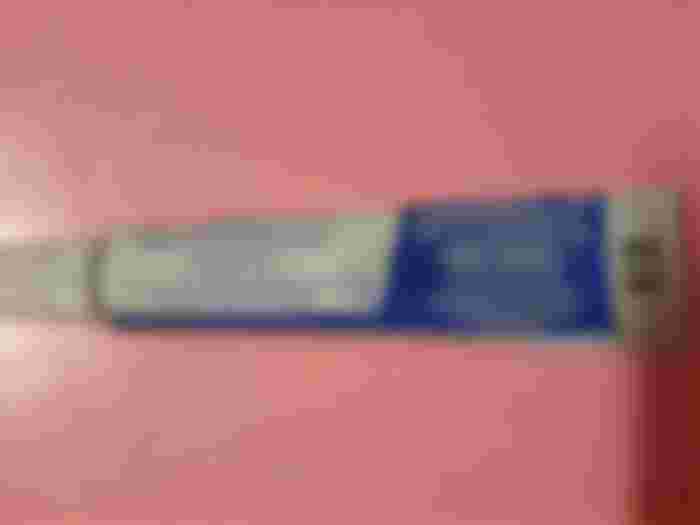I was very alarmed when my child had diaper rashes because I didn't know anything about taking care of a child as a first-time parent. I just added petroleum jelly the first time she had rashes, as my mother-in-law told me, and it quickly vanished, so I just put petroleum jelly any time she has diaper rashes. But one day, petroleum jelly was not healed rashes, and it got worse and ended with a cut on her skin. I took her to the Health Center and they gave me the Zinc Oxide (Rash Free) medication, but it still didn't heal with it. I went to a private pediatrician, and it was cured by Foskina-B Lindell lotion.
Diaper rash is a common type of inflamed skin (dermatitis) that occurs on your baby's bottom as a patchwork of bright red skin. It is also associated with wet or occasionally changed diapers, irritation to the skin, and chafing. It typically affects infants, but the disorder may be acquired by someone who wears a diaper regularly.
Symptoms
Diaper rash is distinguished by the following:
skin sign. In the diaper area, buttocks, thighs, and genitals, the diaper rash is characterized by red, tender-looking skin.
Changes in the temperament of your infant. Particularly during diaper changes, you can find your baby seems more uncomfortable than normal. When the diaper area is cleaned or touched, a baby with a diaper rash frequently fusses or cries.
Causes
A variety of causes can be traced to the diaper rash, including:
Irritation from urine and stools. Prolonged urine or stool exposure can irritate the sensitive skin of an infant. If he or she has regular bowel movements or diarrhea, your baby may be more vulnerable to diaper rash because feces are more irritating than urine.
Chafing or scratching. A rash may result from tight-fitting diapers or clothing that rubs against the skin.
Irritation. The skin of your baby can respond to baby wipes, a new brand of disposable diapers, or a softener for detergent, bleach, or fabric used to wash cloth diapers.
Infection by bacteria. What starts as a simple infection of the skin can spread to the region around it. The region protected by a diaper, buttocks, thighs, and genitals is particularly vulnerable because it is warm and moist, giving bacteria and yeast a perfect breeding ground. Inside the creases of the skin, these rashes may be seen, and there may be red dots scattered across the creases.
Introduction of new foods. When babies begin to consume solid foods, their stool content changes. If your baby is breastfed, in reaction to something the mother has eaten, he or she might develop a diaper rash.
Getting sensitive skin. Babies with skin disorders may be more likely to develop diaper rashes, such as atopic dermatitis or seborrheic dermatitis (eczema).
Application of antibiotics. Antibiotics destroy bacteria, both the good forms and the poor. Bacteria that keep yeast growth in check can be reduced when a baby takes antibiotics, leading to diaper rash due to yeast infection. The risk of diaper rash is also increased for breast-fed babies whose mothers take antibiotics.


Prevention
Keeping the diaper area clean and dry is the best way of avoiding diaper rash.
Change diapers regularly. Promptly remove wet or dirty diapers. Ask staff members to do the same while your child is in child care.
With warm water, clean your baby's bottom. When washing the face, moist washcloths, cotton balls, and baby wipes will help, but be gentle. Don't use alcohol or scent wipes. Pick a moderate, fragrance-free form if you wish to use soap.
With a clean towel, gently pat the skin dry or let it air dry. Don't clean the bottom of your kid. Scrubbing will irritate the skin further.
Don't clutter your diapers. Tight diapers prevent airflow into the diaper area, which produces a damp atmosphere that is favorable for diaper rashes.
Without a diaper, give the bottom of your baby more time. Let your baby go without a diaper where possible. A natural and gentle way to let it dry is to expose the skin to the air.
Consider daily using ointments. If your baby gets rashes often, add a barrier ointment to avoid skin irritation during each diaper change. The time-proven ingredients in several diaper ointments are petroleum jelly and zinc oxide.
After changing diapers, wash your hands well. Hand washing will avoid the spread of bacteria or yeast to other parts of your infant's body, to you, or other children.
Wash your hands well after changing diapers. Hand-washing will avoid bacteria or yeast from spreading to other parts of the body of your infant, to you, or other children.
I've used powders like talcum powder in the past to absorb excess moisture, but doctors don't recommend this anymore. The inhaled powder can irritate the lungs of an infant. There is also no proof that cloth diapers are safer than disposable diapers. Changing diapers regularly is often the right thing to do.

